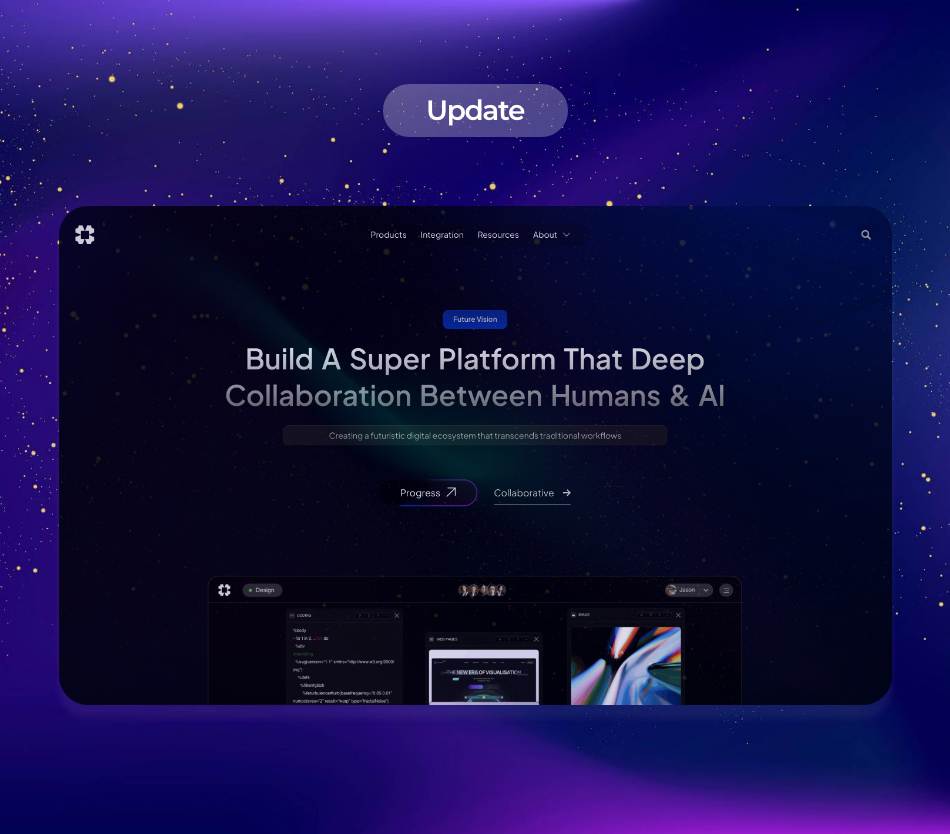In a rapidly evolving digital landscape, the concept of an AI-enhanced operating system (AI-OS) has emerged as a transformative innovation. Traditional operating systems act as the backbone of our digital experience, managing hardware and software resources. However, the integration of artificial intelligence into these systems is ushering in an era of unprecedented efficiency and intelligence. This article explores the latest trends, applications, and industry insights related to AI-enhanced operating systems, focusing on Virtual AIOS and their role in real-time AI-driven decision-making.
.
### The Shift Towards AI-Enhanced Operating Systems
AI-enhanced operating systems are not just an extension of existing software; they represent a paradigm shift in computing. These systems leverage machine learning algorithms and deep learning capabilities to optimize various functions, from resource management to user experience.
As the cloud computing landscape continues to expand, the need for intelligent operating systems becomes increasingly apparent. Traditional systems are often limited in their ability to process vast amounts of data in real time. An AI-enhanced OS, however, can learn from user behavior, adapt to new applications, and even predict resource needs, resulting in more streamlined and responsive performance.
.
### The Concept of Virtual AIOS
Virtual AIOS brings the concept of an AI-enhanced operating system to the next level by utilizing virtualization technology. This allows multiple instances of the AIOS to run concurrently on a single hardware platform, providing organizations with scalability, flexibility, and increased efficiency.
The benefits of Virtual AIOS are manifold. By segmenting resources through virtualization, businesses can optimize their hardware investments while maintaining high levels of performance. This approach enables companies to tailor their operating system environment to specific applications, ensuring that they operate at peak efficiency. Moreover, with AI capabilities at the core, Virtual AIOS can predict performance bottlenecks and autonomously allocate resources, minimizing downtime and improving user satisfaction.
.
### Real-time AI-Driven Decision Making
One of the most significant advancements offered by AI-enhanced operating systems is real-time AI-driven decision-making. This capability allows organizations to process and analyze data dynamically as it is collected, leading to quicker and more informed decisions.
In traditional computing environments, decision-making often relies on historical data and manual analysis, which can be time-consuming and prone to errors. AI-enhanced operating systems break this mold by continuously learning from incoming data streams, enabling businesses to make strategic decisions almost instantly. This is particularly useful in sectors like finance, healthcare, and logistics, where timely information can be the difference between success and failure.
For example, in financial markets, AI algorithms can analyze trading patterns, economic indicators, and even global news events to make real-time trading decisions. In healthcare, AI-enhanced operating systems can monitor patient vitals and predict potential health risks, enabling proactive intervention that can save lives.
.
### Industry Applications of AI-Enhanced OS
The potential applications of AI-enhanced operating systems are vast and varied. Sector-specific implementations showcase how they can solve real-world problems while driving innovation.
1. **Healthcare**: Hospitals and clinics are adopting AI-OS to improve patient outcomes. By analyzing patient data in real time, these systems can assist doctors with diagnostics, highlight critical cases, and even facilitate remote monitoring through wearables. According to a report by McKinsey & Company, AI in healthcare can create $230 billion in annual savings by improving operational efficiency.
2. **Finance**: Financial institutions use AI-enhanced operating systems for fraud detection, risk management, and algorithmic trading. AI can process thousands of transactions per second, learning from patterns to identify irregularities and flag potential fraud.
3. **E-commerce**: AI-OS powers personalized shopping experiences by analyzing user behavior and preferences, optimizing product recommendations, inventory management, and supply chain logistics. Companies like Amazon and Alibaba utilize these systems to enhance customer engagement and streamline operations.
4. **Manufacturing**: In smart factories, AI-enhanced operating systems manage machinery, predict maintenance needs, and streamline supply chain operations. By leveraging real-time analytics, manufacturers can reduce downtime and improve production quality.
.
### Technical Insights: How AI-OS Works
The mechanics behind AI-enhanced operating systems involve several key technologies:
– **Machine Learning Algorithms**: These systems use various algorithms, including supervised and unsupervised learning, to analyze data patterns and adapt over time. As they process more data, they become more accurate and efficient in their predictions.
– **Natural Language Processing (NLP)**: NLP enables AI-OS to understand and respond to user commands in natural language, making system interactions more user-friendly and accessible.
– **Predictive Analytics**: By utilizing historical data, AI-OS can forecast future workloads, detect potential issues before they arise, and automate resource allocation in real time.
– **Cloud Integration**: With the rise of cloud services, AI-enhanced operating systems can leverage cloud computing resources, allowing them to scale effectively and access extensive datasets for training AI algorithms.
.
### Challenges and Future Outlook
Despite the tremendous potential of AI-enhanced operating systems, several challenges remain:
– **Data Privacy and Security**: As these systems handle sensitive data, ensuring privacy and integrity is paramount. Organizations must implement robust security measures to protect against breaches.
– **Integration Complexity**: Transitioning to an AI-OS involves overhauling existing infrastructure and workflows, which can be complex and resource-intensive.
– **Skills Gap**: There is a shortage of skilled professionals who can manage and operate these advanced systems. Ongoing training and education will be critical to unlocking AI-OS’s full potential.
As we look to the future, AI-enhanced operating systems, particularly Virtual AIOS, will continue to influence various industries. They will not only streamline processes but will also empower organizations to make informed decisions swiftly.
.
### Conclusion: The Future is AI-Enhanced
AI-enhanced operating systems represent a significant step forward in the realm of computing. As businesses across sectors begin to recognize the transformative power of AI, the integration of these advanced systems will become increasingly commonplace. The potential for real-time AI-driven decision-making and adaptive resource allocation will ensure that organizations remain nimble and competitive in an ever-changing landscape.
As this trend unfolds, continuous advancements in AI technology, coupled with an increased demand for efficient and intelligent systems, will solidify the role of AI-enhanced operating systems in shaping the future of computing. The journey is just beginning, but the possibilities are limitless.
.
### Sources
1. McKinsey & Company. “The Potential for AI in Healthcare.” [McKinsey Healthcare](https://www.mckinsey.com/industries/healthcare)
2. PwC. “AI in Financial Services.” [PwC Report](https://www.pwc.com/gx/en/services/consulting/ai-innovation.html)
3. Accenture. “AI Unleashed: How AI is Transforming the Retail Environment.” [Accenture Report](https://www.accenture.com/us-en/insights/retail/ai-retail-revolution)
4. Deloitte. “The Future of AI in Manufacturing.” [Deloitte Report](https://www2.deloitte.com/us/en/pages/manufacturing/articles/ai-in-manufacturing.html)
This comprehensive understanding of AI-enhanced operating systems highlights their potential to redefine industries and revolutionize the way we interact with technology.




























